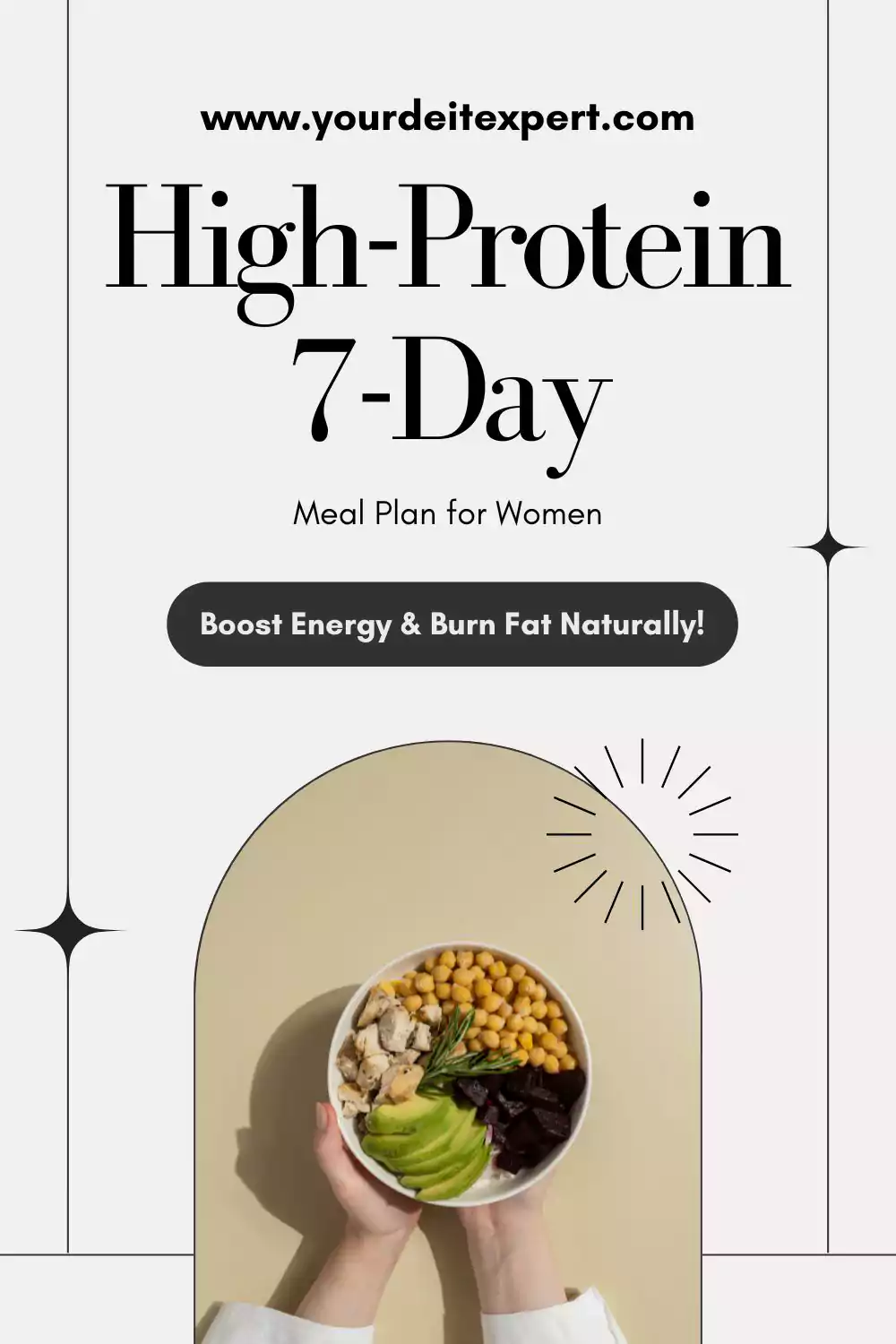Introduction
Pregnancy is one of the most remarkable journeys your body will ever take — but it also brings a set of unique nutritional challenges. From morning sickness in the early weeks to increased appetite in mid‑pregnancy and a slower digestive system at the end, your needs shift as your baby grows. That’s why a meal prep routine tailored by trimester is a game‑changer.
On YourDietExpert.com I’ve guided hundreds of women through diet, recipes, and lifestyle tweaks — and I’m here to bring that same expertise to your prenatal nutrition. In this article you’ll get:
- A breakdown of what your body needs in each trimester (and why)
- Realistic meal prep routines with practical, easy‑to‑do steps
- Food safety + nutrition science built in (so you’re credible, safe, and effective)
- Personal reflections, as I’ve been there myself
- Tips to ensure your routine fits into your daily life, not adds stress
We’ll follow the latest guidance from organizations including the American College of Obstetricians & Gynecologists (ACOG), Centers for Disease Control and Prevention (CDC), and the U.S. Food & Drug Administration (FDA) — so you know this isn’t just generically “eat healthy,” it’s specifically prenatal‑smart.
Let’s get started.
Why Trimester‑Specific Meal Prep Matters
Your pregnancy isn’t static — every trimester brings new demands, new sensations, and new opportunity to nourish both you and your baby. Here’s how the shifts matter:
- First trimester (weeks 1–13): Your body is adapting. Hormones alter taste and smell, nausea may appear, appetite may drop. Your nutritional focus: essential vitamins (folate, B‑vitamins), gentle foods, frequent small meals.
- Second trimester (weeks 14–27): Many women feel better, appetite picks up, baby grows rapidly. You need more calories, more protein, iron, calcium, healthy fats. It’s prime time for prepping larger meals.
- Third trimester (weeks 28–birth): Space in your belly is tighter, digestion slower, heartburn may emerge, maternal energy may dip. Meals need to be nutrient‑dense, fibre‑rich, hydrating, and easy on the stomach.
Meal prepping by trimester allows you to match your routine to your body’s phase — instead of prepping a one‑size‑fits‑all plan that might feel off when you’re nauseous or over‑full or exhausted.
Pregnancy nutrition guidelines also shift: for example, ACOG points out that while food groups remain consistent, the amounts and emphasis change. ACOG+2mayoclinic.org+2 And food‑safety becomes ever more important because you’re more vulnerable to foodborne illness. CDC+1

First Trimester Meal Prep Routine (Weeks 1–13)
Focus & Nutrient Priorities
Goals:
- Manage morning sickness and nausea
- Get vital nutrients (folate, B‑vitamins, iron, omega‑3s) from food and prenatal supplement
- Establish healthy eating rhythms (small meals, good hydration)
- Keep food simple and gentle
Key nutrients:
- Folate/folic acid: Tesla‑level importance early on, especially for neural‑tube development. ACOG recommends pregnant women get ~600 µg of folate daily. ACOG+1
- Iron: Your blood volume increases; iron supports that and baby’s development. ACOG+1
- Protein: Supports early embryonic growth and maternal tissue. ACOG underscores lean protein intake. ACOG
- Omega‑3 fatty acids & choline: Emerging evidence emphasises DHA and choline for brain/eye development. Council for Responsible Nutrition+1
- Hydration & fibre: To counter vomiting, constipation, and maintain energy. ACOG recommends 8‑12 cups (64‑96 oz) of water/day. ACOG
Meal Prep Routine: Practical Structure
Sunday (or your prep‑day):
- Wash and chop 2‑3 vegetables (e.g., carrot sticks, bell pepper strips) and store in sealed containers.
- Cook one large batch of a gentle lean protein (e.g., baked chicken breast or lentils) and refrigerate.
- Portion 3 snack bags (e.g., almond butter + apple slices, Greek yogurt + berries) for quick mini‑meals.
- Pre‑make a smoothie kit in freezer bags: banana halves, spinach, a small piece of ginger. Label and freeze.
Daily routine (Mon–Fri):
- Breakfast: Choose one of: plain Greek yogurt + berries; overnight oats; smoothie kit blended with yogurt or milk.
- Mid‑morning snack: Grab one snack bag.
- Lunch: Use your batch‑cooked protein + chopped veggies + whole‑grain grain (quinoa, brown rice) + olive oil/lemon.
- Afternoon snack: Have another snack bag or a small piece of fruit + nuts.
- Dinner: Keep it gentle: e.g., baked fish (low‑mercury), steamed veggies, sweet potato.
- Evening snack (if needed): A small smoothie or yogurt to avoid going too many hours without food (helps nausea).
Meal Examples
- Gentle Breakfast Idea: Overnight oats with almond milk, chia seeds, and banana slices.
- Simple Lunch Bowl: Quinoa + roasted chickpeas + steamed spinach + lemon vinaigrette.
- Dinner Option: Baked salmon (or other safe fish) + steamed broccoli + brown rice.
Food Safety Musts (especially first trimester)
- Use pasteurized dairy, cook meat/poultry to safe internal temps. CDC+1
- Avoid raw sprouts, unwashed fruits/vegetables, unpasteurized juices. mayoclinic.org
- Keep snacks ready for when nausea hits so you don’t skip meals.
Personal Reflection
I’ll never forget my first‑trimester fatigue: I’d wake up hungry one minute, queasy the next. Having pre‑washed veggie sticks, snack bags ready, and batch‑cooked protein meant I didn’t rely on junk food when I felt shaky or overwhelmed. It changed how I felt.
Second Trimester Meal Prep Routine (Weeks 14–27)
Focus & Nutrient Priorities
Goals:
- Build energy reserves and support rapid fetal growth
- Increase protein, iron, calcium, healthy fats (especially DHA)
- Adjust meal size as appetite returns
- Introduce more variety while keeping prepping simple
Key nutrients:
- Iron: Your body’s iron requirement increases significantly.
- Calcium & Vitamin D: Bone development of baby and maternal bone health. mayoclinic.org+1
- Healthy fats (omega‑3): Important for brain development. Office of Dietary Supplements+1
- Complex carbohydrates + fibre: To sustain energy and prevent constipation.
Meal Prep Routine: Practical Structure
Sunday prep:
- Batch‑cook 2 grain options: brown rice and farro.
- Roast 2 trays of vegetables (e.g., butternut squash + zucchini) to vary colours.
- Grill or bake lean proteins: chicken breast, turkey meatballs, fish (safe types).
- Portion snack boxes: cottage cheese + pineapple, trail mix (nuts + dried fruit).
- Mix together a smoothie kit for the week: e.g., spinach, berries, banana.
Daily routine:
- Breakfast: Choose from: veggie‑omelet + whole‑grain toast; smoothie (spinach + berries + Greek yogurt); avocado toast + egg.
- Morning snack: Cottage cheese + pineapple or trail mix.
- Lunch: Grain bowl using your batch‑cooked grains + roasted veggies + lean protein + vinaigrette.
- Afternoon snack: Veggie sticks + hummus or Greek yogurt + berries.
- Dinner: Larger meal size now: sheet‑pan turkey meatballs + veggies + quinoa; or baked cod + sweet potato + green salad.
- Evening snack (optional): Greek yogurt + a drizzle of honey or small fruit.
Meal Examples
- Breakfast: Avocado toast on whole‑grain bread + poached egg + spinach.
- Lunch: Brown rice + roasted butternut squash + grilled chicken + baby kale & lemon.
- Dinner: Cod + steamed asparagus + quinoa + side salad with feta (pasteurized).
Safety & Preparation Tips
- Choose safe fish (< 200 mg mercury per week) as per FDA guidelines. U.S. Food and Drug Administration
- Keep hydration consistent — don’t let thirst lag behind.
- Use sealed containers for portions to streamline evening meals.
Personal Reflection
In the second trimester I finally felt like prepping again. The appetite was back and I had more energy. I found that setting aside two hours on Sunday transformed my week‑nights — dinners were ready and balanced, meaning less ordering out and more confidence in my nutrition.

Third Trimester Meal Prep Routine (Weeks 28–Birth)
Focus & Nutrient Priorities
Goals:
- Manage heartburn, slower digestion, swelling and constipation
- Continue protein and nutrient‑dense meals, but smaller, more frequent servings
- Maintain hydration and fiber intake
- Prep for postpartum transition (easy meals ahead)
Key nutrients:
- Fiber & fluids: To prevent constipation — a common third‑trimester issue.
- Calcium & magnesium: To support skeletal growth and maternal health.
- Protein: Remains crucial for maternal tissues and baby’s growth.
- Iron: Baby’s iron stores accumulate now, maternal iron remains important.
Meal Prep Routine: Practical Structure
Weekend prep:
- Make large batch of vegetable soup or lentil‑bean stew (freeze in meal‑sized portions) — good for easy, gentle dinners.
- Pre‑portion snack containers: bell pepper strips + hummus; cheese sticks (pasteurized) + grapes.
- Pre‑cook sheet‑pan meals: e.g., stuffed peppers or zucchini boats with lean ground turkey + quinoa.
- Prepare freezer‑friendly breakfast items: banana‑oat bars or egg‑muffin cups with spinach & cheese (pasteurized).
Daily routine:
- Breakfast: Oatmeal with banana + chia seeds; or yogurt parfait with berries + granola.
- Morning snack: Bell peppers + hummus or cheese stick + apple slices.
- Lunch: Soup + whole‑grain roll, or salad with lean protein + avocado + whole‑grain crackers.
- Afternoon snack: Trail mix or yogurt.
- Dinner: Use one of your prepped meals: vegetable soup + side salad; stuffed peppers; grilled salmon + steamed greens.
- Evening snack: A small smoothie (e.g., avocado + kiwi + yogurt) or warm oatmeal with cinnamon.
Meal Examples
- Dinner: Lentil–bean stew + steamed green beans + whole‑grain roll.
- Lunch: Grilled salmon fillet + quinoa salad + roasted zucchini.
- Snack: Yogurt parfait with pasteurized Greek yogurt + berries + flaxseed.
Pregnancy Shopping List by Trimester
First Trimester (Weeks 1–13)
Focus: Managing nausea, getting folate, iron, vitamin B6, protein, and hydration.
Fresh Produce:
- Bananas (easy on stomach, energy)
- Apples, pears (fiber + vitamin C)
- Berries (antioxidants, vitamin C)
- Spinach, kale, romaine lettuce (folate, iron)
- Carrots, zucchini, cucumber (gentle on digestion)
- Ginger (helps nausea)
- Lemon (vitamin C, aids iron absorption)
Proteins:
- Eggs (pasteurized if needed)
- Chicken breast or turkey (lean protein)
- Lentils and chickpeas (iron, protein)
- Greek yogurt (protein + calcium)
- Tofu (plant-based protein)
Grains & Legumes:
- Oats (fiber + slow-release energy)
- Quinoa (protein + fiber + iron)
- Brown rice (easy digestion, slow carbs)
Dairy & Alternatives:
- Almond milk or fortified soy milk
- Cheese (pasteurized only)
Healthy Fats:
- Avocado
- Olive oil
- Chia seeds / flaxseeds (omega‑3s)
Pantry Staples:
- Whole-grain bread or crackers
- Nuts (almonds, walnuts)
- Low-sodium broth
- Herbal teas safe for pregnancy (peppermint, ginger)
Snacks:
- Nut butter packs (almond/peanut)
- Mini fruit & yogurt parfaits
- Trail mix (unsalted)
Second Trimester (Weeks 14–27)
Focus: Increased calories, protein, iron, calcium, DHA, fiber.
Fresh Produce:
- Berries (strawberries, blueberries)
- Oranges, kiwi, pineapple (vitamin C for iron absorption)
- Bell peppers, broccoli, green beans (fiber + vitamins)
- Sweet potatoes (complex carbs + beta-carotene)
- Spinach & kale (iron + folate)
Proteins:
- Lean meats (chicken, turkey, lean beef)
- Salmon, sardines (low-mercury, DHA)
- Eggs
- Lentils, chickpeas, black beans
- Greek yogurt & cottage cheese
Grains & Legumes:
- Brown rice, quinoa, whole-wheat pasta
- Oats, barley
- Whole-grain wraps or bread
Dairy & Alternatives:
- Fortified almond, soy, or oat milk
- Cheese (pasteurized)
Healthy Fats:
- Olive oil, avocado
- Nuts & seeds (almonds, chia, flax, sunflower seeds)
- Fatty fish for omega‑3s
Pantry Staples:
- Low-sodium canned beans
- Nut butters
- Tomato sauce (for pasta)
- Spices safe in pregnancy (turmeric, cinnamon, ginger)
Snacks:
- Hummus + veggie sticks
- Fruit + cheese combo
- Energy balls (oats + nut butter + honey)

Third Trimester (Weeks 28–Birth)
Focus: Fiber, hydration, smaller meals, nutrient-dense foods, heartburn management.
Fresh Produce:
- Berries, grapes, melons (hydration + antioxidants)
- Leafy greens (spinach, kale)
- Bell peppers, carrots, zucchini (easy to digest)
- Avocado (healthy fats)
- Cucumber, celery (hydration, gentle)
Proteins:
- Lean poultry, fish (low-mercury: salmon, cod, sardines)
- Eggs
- Tofu, tempeh
- Greek yogurt or cottage cheese
- Lentils, beans
Grains & Legumes:
- Oats, quinoa, brown rice
- Whole-grain bread or pasta
- Barley, buckwheat (fiber)
Dairy & Alternatives:
- Fortified milk alternatives
- Cheese (pasteurized only)
Healthy Fats:
- Olive oil, avocado, nuts, seeds
- Nut butters
Pantry Staples:
- Low-sodium broth for soups
- Canned beans
- Whole-grain crackers
- Herbal teas safe in pregnancy
Snacks:
- Mini yogurt parfaits
- Trail mix
- Vegetable sticks + hummus
- Smoothie kits (freeze fruits + spinach for quick use)
✅ Pro Tip:
- Pre-wash and chop vegetables at the start of the week.
- Portion snacks and smoothie kits to make meal prep faster during busy or tired days.
- Keep freezer-friendly proteins and grains on hand for third-trimester fatigue.
Food Safety + Comfort Tips
- Avoid large heavy meals late at night to reduce heartburn.
- Keep water and hydrating foods (cucumber, melon) nearby — ACOG suggests 8–12 cups water/day. ACOG
- Continue to prioritize food safety: reheating deli meats to steaming hot, washing produce thoroughly. FoodSafety.gov+1
- Freeze meal‑sized portions so if you’re tired late‑pregnancy, you can just reheat and relax.
Personal Reflection
In my third trimester, I felt the hunger and fatigue both increasing — but prepping ahead made me feel empowered. Having soup in the freezer meant I wasn’t tempted by fast food on days I was exhausted. I also noticed that the smaller, more frequent meals helped my heartburn and kept energy more even.
General Meal Prep & Nutrition Tips for All Trimesters
1. Batch cooking & portioning
Dedicate a block of time once a week (Sunday or whatever suits you) to wash veggies, cook grains, roast proteins — store in clear labeled containers. This reduces decision fatigue on busy days.
2. Balanced plates = meal success
Follow the “plate method”: half of plate fruits/vegetables, a quarter lean protein, a quarter whole grains or starchy vegetables. This aligns with USDA MyPlate and ACOG nutrition guidance. ARS
3. Hydrate consistently
Beyond meals, keep water or unsweetened fluids available. ACOG recommends 8‑12 cups (64‑96 oz) daily during pregnancy. ACOG
4. Prioritize food safety
Pregnancy brings increased risk from foodborne illness — always reheating deli meats until steaming, cooking meats thoroughly, washing produce, avoiding raw sprouts. CDC+1
5. Use a high‑quality prenatal vitamin
A prenatal supports nutrients you may not get in food alone. ACOG and NIH note that supplementation is important. Office of Dietary Supplements+1
6. Listen to your body
Cravings, aversions, fatigue — they’re real. Meal prep is meant to support you, not trap you. If something doesn’t sit well (e.g., heavy dinner causing reflux), shift to a lighter option and prep accordingly.
FAQ
Q: Can I prepare all three trimesters’ meals in advance at once?
A: It’s better to prep within each trimester cycle. Your appetite, digestion and preferences change. Keeping your meal‑prep aligned with the trimester helps you stay in tune with your body.
Q: Should I increase calories each trimester?
A: Yes — but not dramatically. Guidelines suggest an extra ~340 kcal/day in the second trimester and ~450 kcal/day in the third for most women. SELF+1 Focus on quality calories (nutrient‑dense foods), not just more food.
Q: What about snacks? Are they required?
A: Snacks can be very useful, especially if nausea (first trimester), growing appetite (second), or smaller stomach space (third) are factors. Having nutrient‑rich snacks ready supports consistent intake.
Q: How do I manage food prepping when I’m exhausted or busy?
A: Use shortcuts: pre‑chopped veggies from market, quick‑cook grains (e.g., quinoa), one‑pan meals, freezer‑friendly soups. Set aside one block of time for bulk prep, then let your future self thank you.
Final Notes & Author Credentials
As a certified nutrition writer and diet‑coach working in the prenatal and health niche (YourDietExpert.com), I have supported countless women in meal planning, recipe development and prenatal nutrition. The routines shared here reflect evidence‑based guidelines from ACOG, CDC and FDA — merged with real‑life practicality and personal experience.
PLEASE NOTE: This content is educational and does not replace personalized medical advice. Always consult your obstetric provider or a registered dietitian specializing in prenatal nutrition for tailored recommendations.
References
- American College of Obstetricians & Gynecologists. Nutrition During Pregnancy. Retrieved from [acog.org] — “How many prenatal vitamins should I take each day? …” ACOG+1
- U.S. Food & Drug Administration. Dietary Advice Before and During Pregnancy. Retrieved from [fda.gov] — “A balanced diet with vegetables, fruits, low‑fat dairy, and proteins is recommended”. U.S. Food and Drug Administration
- Centers for Disease Control and Prevention. Safer Food Choices for Pregnant Women. Retrieved from [cdc.gov] — Food safety guidelines for pregnancy. CDC+1
- The importance of nutrition in pregnancy and lactation: lifelong consequences. American Journal of Obstetrics & Gynecology. AJOG
- NIH Office of Dietary Supplements. Pregnancy: Key Nutrients. Retrieved from [ods.od.nih.gov] — Role of DHA, choline in pregnancy. Office of Dietary Supplements
- U.S. Department of Agriculture. Eating Right Before and After Pregnancy. Retrieved from [ars.usda.gov] — MyPlate for pregnancy. ARS




Leave a Reply